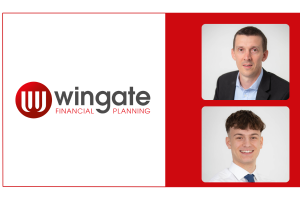See saw, Marjorie Daw,
Johnny shall have a new master,
He shall have but a penny a day,
Because he can’t work any faster.
Speaking recently at an Insurance Society of Edinburgh do at a newly-yellow-pointed-hatty Standard Life House, I had occasion to muse publicly on seesaws and their unique relevance to the UK life and pensions industry. I’m now ready to go out on a limb and say that the seesaw is the most directly relevant piece of playground equipment to financial services. Go on, shoot me down. I’m pretty sure the ISE members wanted to.
Anyway, how it all happened is that we got onto the old saw (but not a seesaw, not yet, this is a cracking analogy, are you having fun yet?) about the covenant of a wrap provider towards their proposition versus the size of that provider. One IFA expressed a preference for taking a life-office sponsored solution on financial strength grounds. David Ferguson just about exploded at that point and was only restrained by the thought of the cleaning bill he’d face from Standard Life.
I’ve written here before about how hard it is for lifecos to break their thinking and move to a model which we’d recognise as genuinely new model. Perhaps it was a sense of nostalgia, but I found myself defending the lifecos to the audience. Making this move is a lot harder for them than you’d think.
Picture this. You’re the chief wallah of XYZ Life. You’re the scion of a long line of good eggs who have provided bundled products that provide broadly non-toxic solutions to people who don’t know much better. Your actuaries are happy because margins are implicit and tucked in. Your salesforce is happy because there’s enough fat – and no-one understands the maths anyway – to pay jolly decent commissions to IFAs with “if they’re daft enough to pay it, I’m smart enough to take it” on the back of their business cards. And your shareholders (if you have any) are happy because the City boys reward you for new business irrespective of its profitability.
Then suddenly you need to embrace a new model. Not only that, but the very existence of that model gives the lie to the lie you’ve been living for decades. You’ll need to invest heavily. Your margins – if you’re lucky – will be 1/3 of what they were. And your back book is toast, not least because if you’re moving a back book to your new platform, IFAs will naturally start with your own. At the same time you’ve got a very nice head office, an underfunded final salary scheme and a dividend to maintain.
The more you’re successful in the new model, the more you admit your old model was wrong. Segmentation won’t explain it. Why would some clients need transparency and low charges and others not?
Now go and explain that to your investors, shareholders and board. That’s the seesaw. The two models can’t coexist. Platforms and transparency replace packaged products and opacity. All that’s left is the decision about how long the transition takes.
I’m not sure that the leaders of these great, old companies trying to come to terms with a deeply strange and frightening new world aren’t a little bit brave. But time’s a-marching. And if they want to be paid more than a penny a day, they’d better work faster.




